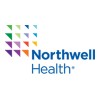
Anticoagulation in Emergency General Surgery
Emergency General SurgeryWhile DOACs are increasing in use in the EGS patient population, the risk of bleeding and the reversal of these agents to reduce hemorrhage is still evolving. Given the paucity of data regarding the impact of DOACs in this patient population, it becomes empiric to identify bleeding patterns and outcomes in the EGS population taking DOACs. We hypothesize that patients taking a DOAC will have a higher bleeding incidence and need for an unplanned intervention secondary to hemorrhage in EGS patients undergoing an urgent or emergent operation when compared to patients taking warfarin and antiplatelets.

Emergency PWAS in Respiratory Infectious Disease
Viral InfectionsBacterial Infections6 moreDevelop an emergency PanorOmics Wide Association Study (ePWAS) for the early, rapid biological and pathophysiological characterisation of known and novel Infectious Diseases in adult patients presenting to emergency departments with suspected, acute, community-acquired respiratory infectious disease (scaRID). Phase 1 Develop an ED-ID biobank (named ePWAS-RID). Phase 2 Targeted research for the discovery of novel diagnostics, prognostics and therapeutics

Prediction Of Serious Adverse Event in Emergency Department With dysKAlemia, Retrospective Study...
EmergenciesDyskalemia, hypo- and hyperkalemia are common in the emergency department and are associated with increased morbidity and mortality. The potential seriousness of dyskalemia results from the potential alteration of intracardiac conduction and the increase in cardiac rhythm disorders, all associated with a lethal risk. Given the aspecific symptoms of dyskalemia and the complex causal links to be acquired, it is difficult to judge the severity of the disorders in front of an initial clinical presentation of a patient in the emergency room, as the patient may present a serious condition during his stay in the emergency room, related to the dyskalemia and not prejudged at first. The ECG is recommended to judge the severity of the disorder, in association with the level of kalemia, but the electrical changes of its pattern in the context of dyskalemia are sometimes so fine that even the eye of the practitioner is not able to detect them. To date and to our knowledge, there is no tool for predicting the risk of RTA or death in dyskalemia. The existing studies on the subject, including ECGs, seek to detect dyskalemia and not its complications, and the proposed tools only take into account the ECG and not the clinical context of the patient.

Developing a Decision Tool for Diverticulitis in the Emergency Department Using Ultrasound
DiverticulitisThe purpose of this study is to create a decision tool using ultrasound, patient history, and laboratory values to predict a diagnosis of complicated diverticulitis and whether the patient requires further imaging. The accuracy of the decision tool will be evaluated. This study will also assess the ability of ultrasound to diagnose complicated and simple diverticulitis, and the inter-provider reliability of ultrasound interpretation of diverticulitis

Evaluation of the Emergency Imaging Strategy for the Diagnostic Management of Renal Colic
Renal ColicEmergency imaging is necessary for the diagnostic management of renal colic in the emergency department. Ultrasound is rapidly available and non-irradiating, allowing to look for a stone and a pyelocalic dilatation. But it is less sensitive when the stone is ureteral. CT has a sensitivity of 96% and a specificity of 100%. The latest French recommendations date from 2008, recommending ultrasound and an unprepared abdomen in cases of uncomplicated renal colic. For the European Society of Radiology, ultrasound should be the first-line examination. The place of a systematic CT scan as first-line examination for the diagnosis of renal colic in the emergency department is therefore still under discussion. An evaluation of practice will make it possible to assess the imaging strategy applied in an emergency department.

Strokecopilot: A Precision Medicine Tool in the Stroke Emergency
Cerebrovascular Accident (CVA)Ischemic stroke or cerebral infarction (CI) is an immediate emergency affecting approximately 100,000 - 150,000 patients each year in France and is managed in the neurovascular intensive care unit (NICU). Recanalization treatments can prevent disability, but patients must be carefully selected. Knowledge in this field is evolving rapidly, which tends to make management more complex and personalized. In addition, the permanence of thrombolysis channels involves neurologists of all expertise. Decision support tools are desirable to enable precision medicine in stroke. Strokecopilot is a web application developed by the principal investigator. Its algorithm contextualizes the patient in a set of evidence-based medicine references (recommendations and clinical trials) and gives the result of their cross-referencing to the user to indicate theoretical indications for intravenous thrombolysis and mechanical thrombectomy.

Vital Signs Monitoring of Emergency Responders in Different States
Heart Rate MonitoringThe goal of this observational study is to learn about emergency responder in different states. The main questions it aims to answer are: Ten vital signs and behavioral parameters in different states (quiet, after post, after physical training) including: respiratory rate, pulse rate, oxygen saturation, body position, chest and abdominal respiratory movements, electromyography (EMG), electroencephalogram (EEG), partial pressure of end-expiratory CO2 concentration, partial pressure of transcutaneous oxygen, and partial pressure of transcutaneous carbon dioxide. Eight vital signs and behavioral parameters in different environments (altitude, confined space, energized work, job site) including: respiratory rate, pulse rate, oxygen saturation, body position, chest and abdominal respiratory movements, electromyography (EMG), electroencephalogram (EEG), and partial pressure of end-expiratory CO2 concentration. Participants will normal operating conditions, the researcher collects vital sign information.

Healthcare Seeking Behavior of Frequent Emergency Care Visitors
Emergency CareAcute Care ChainThis retrospective study is part of a research line from Zuyderland Medical Centre focusing on the acute care chain. In the current study, we aim to focus on the frequent visitors of the Emergency Department (ED) and bridge the gap to out-of-hours primary care. Although the Dutch healthcare system is unique with their 24/7 accessibility to primary care, crowding within the acute care chain is a growing problem, even in the Netherlands. Patients visiting an ED multiple times a year, the so called frequent visitors are one of the contributing factors of ED crowding. This relatively small group of patients accounts for a disproportionate number of many ED visits. In the United States, it is estimated that between 4.5 and 8% of patients are responsible for almost one third of the total annual number of ED visits, by visiting the ED four or more times per year. Dutch research by vd Linden found that 0.5% of total ED patients visited their ED frequently, however, they defined frequent visitors using a threshold of 7 visits per year. In our study, we will use a cutoff of more than four visits per year to define a frequent visitor. We aim to gain insight in who Dutch frequent visitors are, or - in other words - what their baseline characteristics are, which complaints are responsible for their healthcare seeking behavior, and do these patients also seek medical help at other places during out-of-hours like a General Practitioner Cooperative (GPC)? We will use existing ED and GCP data to identify patients who either visited our ED or one of the adjacent GPCs 4 times or more in one year. Using these data, we aim to answer the following questions: Primary objective: - How many patients present to the ED of the Zuyderland hospital in Heerlen and Sittard 4 times or more a year and what are the characteristics of these frequent visitors of the ED? Secondary objective: How many patients present to the GPC of South East Limburg 4 or more times a year and what are their characteristics of frequent visitor? Is there an association between the characteristics of frequent visitors of the ED of the Zuyderland hospital and subsequent (frequent) presentation at the GPC?

Prognostic Value of Delta LUS Score of Patients Hospitalized for Acute Heart Failure
EmergenciesAcute Heart Failureprognostic value of delta LUS score of patients hospitalized for acute heart failure within 30 days of discharge.

Point-of-care EEG in the Pediatric Emergency Department
Status EpilepticusNon-Convulsive Status Epilepticus1 moreThe researchers investigate the use of a simplified electroencephalogram (point-of-care EEG) in the pediatric emergency department for children with impaired consciousness or an ongoing epileptic seizure ("status epilepticus"). In addition, the researchers will compare the simplified EEG with the conventional EEG in the epilepsy outpatient clinic.
